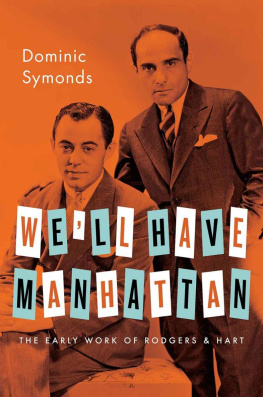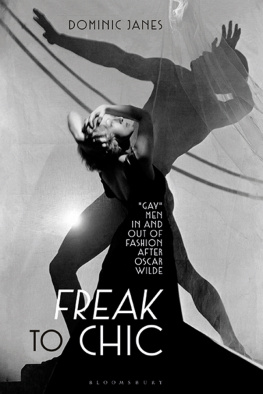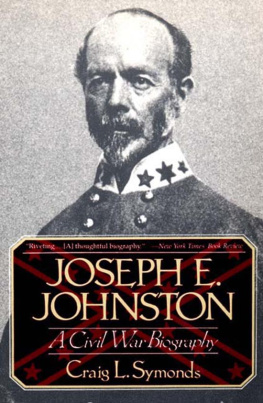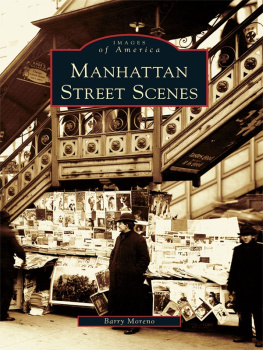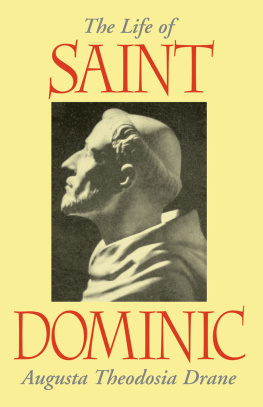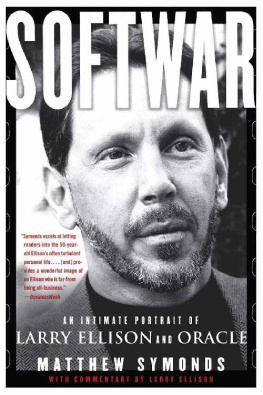Carol J. Oja
WELL HAVE MANHATTAN
The Early Work of Rodgers and Hart
DOMINIC SYMONDS


Oxford University Press is a department of the University of Oxford. It furthers the Universitys objective of excellence in research, scholarship, and education by publishing worldwide.
Oxford New York Auckland Cape Town Dar es Salaam Hong Kong Karachi Kuala Lumpur Madrid Melbourne Mexico City Nairobi New Delhi Shanghai Taipei Toronto
With offices in Argentina Austria Brazil Chile Czech Republic France Greece Guatemala Hungary Italy Japan Poland Portugal Singapore South Korea Switzerland Thailand Turkey Ukraine Vietnam
Oxford is a registered trade mark of Oxford University Press in the UK and certain other countries.
Published in the United States of America by Oxford University Press 198 Madison Avenue, New York, NY 10016
Oxford University Press 2015
All rights reserved. No part of this publication may be reproduced, stored in a retrieval system, or transmitted, in any form or by any means, without the prior permission in writing of Oxford University Press, or as expressly permitted by law, by license, or under terms agreed with the appropriate reproduction rights organization. Inquiries concerning reproduction outside the scope of the above should be sent to the Rights Department, Oxford University Press, at the address above.
Complete credits for musical examples and song lyrics may be found on pages 315319.
You must not circulate this work in any other form, and you must impose this same condition on any acquirer.
Library of Congress Cataloging-in-Publication Data
Symonds, Dominic, author.
Well have Manhattan: the early work of Rodgers and Hart, 19191931
/Dominic Symonds.
pages cm.(The Broadway legacies series)
ISBN 9780199929481 (hardback)
ebook ISBN 9780190216887
1. Rodgers, Richard, 19021979Criticism and interpretation.
2. Hart, Lorenz, 18951943Criticism and interpretation.
3. MusicalsUnited States20th centuryHistory and criticism. I. Title.
ML410.R6315S96 2015
782.1'40922dc23 2014016376
1 3 5 7 9 8 6 4 2
Printed in the United States of America
on acid-free paper
For karen, verit, evelyn , and max , with love
(And because theres a song about everything)
CONTENTS


| . |
| . |
| . |
| . |
| . |
| . |
| . |
| . |
| . |
| . |
| . |
| . |
| . |
| . |
| . |
| . |
| . |
| . |
| . |
| . |
| . |
| . |
| . |
| . |
| . |
| . |
| . |
| . |
| . |
| . |
| . |
| . |
| . |
| . |
| . |
| . |
| . |
| . |
| . |
| . |
| . |
| . |

A 1938 Time magazine cover story boldly proclaimed that nobody ever fused words and music more effectively than Rodgers and Hart. The twenty-six Broadway shows the pair created between their first meeting in 1919 and Harts death in 1943 contain a vast legacy of timeless songs, at least one or two in each show (see the accompanying footnote for a representative list of fine songs first appearing in the shows that are explored in the present volume). But while the songs are glorious and rightfully revered, the shows that introduced them are far less well known and less appreciated. This is a shame. From the beginning of their career, the boys from Columbia [i.e., Columbia University] worked hard to use songs to tell stories in new ways and often achieved this goal. The result was a succession of innovative musicals that broke new dramatic ground and a long list of swell and witty, sweet and grand, and often wicked, beautifully crafted, sophisticated, memorable, and seldom formulaic songs.
Despite their relatively low profilewith some exceptions later in their career such as On Your Toes (1936), Babes in Arms (1937), The Boys from Syracuse (1938), and the widely acclaimed pioneering classic Pal Joey (1940)the Rodgers and Hart shows, especially those from the early years, deserve to be better known and understood. This is where the author of Well Have Manhattan: The Early Work of Rodgers and Hart, 19191943 comes to the rescue. Symonds, Reader in Drama at the University of Lincoln, author of the forthcoming Broadway Rhythm: Imaging the City in Song (University of Michigan Press), co-editor (with George Burrows) of the journal Studies in Musical Theatre, and co-founder of the international conference Song, Stage and Screen, has meticulously but engagingly examined the early work of Rodgers and Hart with special attention to the two Garrick Gaieties (1925 and 1926), Dearest Enemy (1925), The Girl Friend and Peggy-Ann (1926), A Connecticut Yankee (1927), Chee-Chee (1928), and the three shows the team wrote for the London stage, Lido Lady (1926), One Dam Thing after Another (1927), and Ever Green (1930, on which the 1934 film Evergreen is based). Symonds also offers a chapter on the teams frustrating, mostly amateur years between 1919 and 1925, during which they struggled to find a place in the commercial marketplace. They finally took Manhattan by storm with the song Manhattan in the Theatre Guild fundraiser, the Garrick Gaieties of 1925. Another chapter, on their less successful Broadway efforts that followed the stock market crash of 1929, illuminates a series of lesser successes that prompted the pair to seek their fortune in Hollywood (a story to be continued in Symondss second volume).

